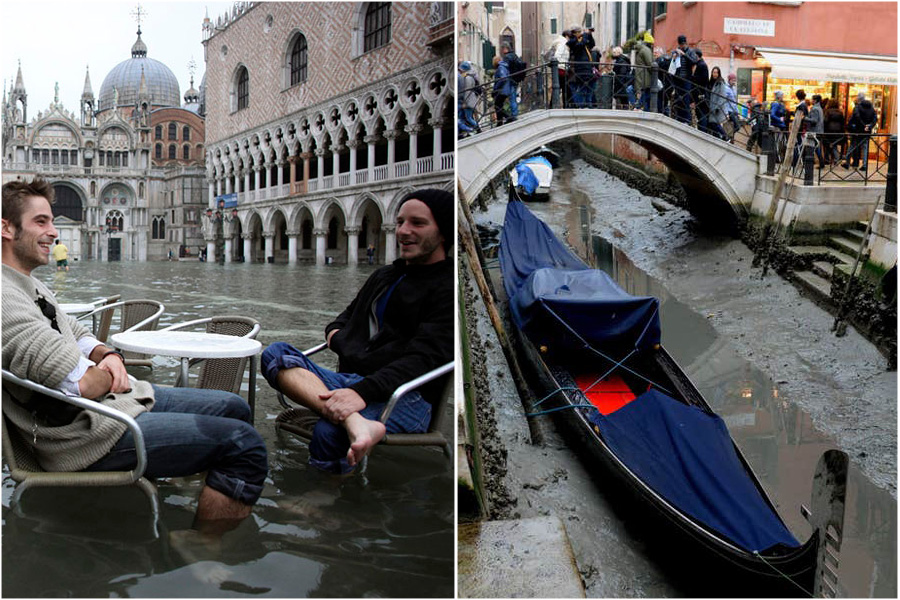Climate Change in Venice: From Floods to Dry Canals
February 12, 2020
Recently, several coastal cities around the world have been exposed to major flooding, bringing tremendous destruction and damage. In Venice, Italy, a city in the Adriatic Sea, human-induced climate change is suspected as the cause for extreme high tides, which is damaging this ancient city. But there have also been extremely low tides, which complicate matters in different ways.
In November, according to the BBC, Venice suffered a major flood because of exceptional high tides: “In November, Venice experienced its highest water levels in more than 50 years in what some said was a direct result of climate change.”
Alvise Papa, head of the Venice Center High Tides, said, “This is the first time in history that high waters have reached the peak of 1.40 meters five times a year.” (The highest tide, in November, was recorded at 1.87 meters.)
Luigi Brugnaro, mayor of Venice, explained that the damage from the intense flooding is extreme, and preserving historical monuments, homes, and businesses will be expensive. Calling it a “blow to the heart of the city,” he estimated that the damage will likely cost more than a billion Euros to fix.
According to The Washington Post, some landmarks that were damaged in the city include St. Mark’s Square, St. Mark’s Basilica, Banksy’s “Shipwrecked Girl” mural, Gritti Palace, Libreria Acqua Alta, Grand Canal, and Doge’s Palace.
Due to the recent flooding, Venice is now facing concerns as to whether more residents will leave the city due to the difficult living conditions. NBC News reports that with each upcoming decade, more residents of Venice seem to be leaving. Saphora Smith and Yuliya Talmazan write that just in the last year, “The population shrank by 803 people.” They write that in addition to constant flooding, residents of Venice also face “rampant tourism, high living costs, and the lack of jobs and affordable housing.”
NBC News also reports that while residents are familiar with frequent floods, this most recent flood was accompanied by more extreme levels of water and severe damages. Smith and Talmazan write that this most recent flood “plunged more than 80 percent of the city underwater.”
Shouro Dasgupta, an environmental economist for the Euro-Mediterranean Center on Climate Change, explained that Venice has always struggled with flooding, but official records suggest it’s getting worse.
However, in the midst of all the issues surrounding the flooding, new issues are arising: After the extreme floods and high tides, Venice also faces the issue of extremely low tides, which in January almost completely dried up several canals. (Venice is built on a series of 118 small islands that are separated by canals and linked by over 400 bridges.)
According to the BBC, “Boats have been seen beached as water levels drop drastically. The canals look more like mud trenches and getting around has become a problem for many in the city.”
In Miami, Fla., sea levels have also been rising dramatically, causing frequent flooding. “King Tides,” or massive tides that cause flooding along coastal cities, have been occurring for several years there.
Matthew Cappuci writes in The Washington Post, “Coastal flooding is now routine, submerging some areas on a monthly basis…There’s even a ‘King Tide’ season in the late fall and early winter, when the flooding is particularly severe.”
All in all, due to recent climate change and other issues that contribute to natural disasters, it is becoming more difficult each day to adapt to these conditions. Not only is Venice suffering, but coastal cities across the United States are also experiencing flooding and learning to adapt to the hardships that come with it.


